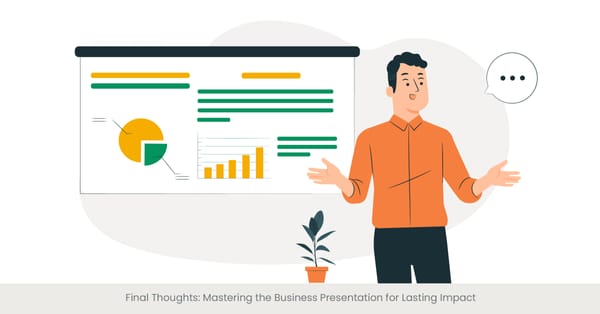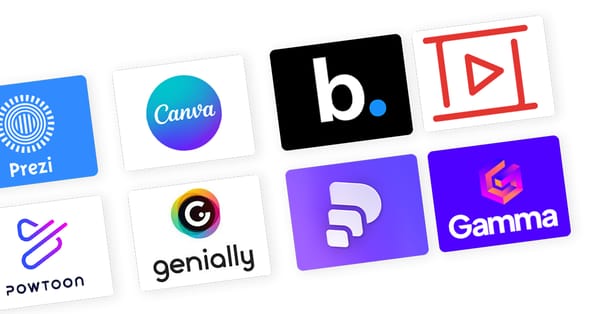
Crafting a Powerful Opening Statement

Engaging Your Audience from the Start ideas for business presentation
The opening of any oral business presentation is not just about beginning your speech; it's about capturing the attention of your audience immediately and effectively. A powerful opening statement acts as the gateway to your presentation, setting the tone and establishing expectations. It's here that you provide a snapshot of what's to come, intriguing your audience and compelling them to listen. Crafting such an opening requires a blend of creativity, clarity, and relevance to the business topic for presentation. It’s essential to start with something that resonates with your audience, whether it’s a startling statistic, a provocative question, or a compelling story, ensuring the ideas for business presentation are front and center.
Understanding the significance of your opening statement goes beyond merely grabbing attention; it involves laying a solid foundation for the entire presentation. Historical context plays a crucial role here. Great speakers throughout history have understood that the first few minutes of any presentation can make all the difference. By examining successful sales presentations and other business presentations, we learn that the most impactful beginnings are those that connect with the audience's needs, interests, and emotions. A well-crafted opening is rooted in thorough research and an in-depth understanding of your audience's demographics, expectations, and business growth aspirations.
Real-World Examples and Current Trends
Incorporating real-world examples into your pitch deck or opening can significantly enhance its impact. Consider how Steve Jobs commenced his product launch presentations; he often started with broad, relatable statements before narrowing down to the specifics of his new product, embodying the essence of an impactful presentation. Similarly, TED Talks often begin with personal anecdotes or thought-provoking questions that directly engage the audience's curiosity. These techniques are not only effective for maintaining audience interest but also for setting the stage for a persuasive presentation. Modern trends show a move towards more interactive and visually appealing presentation styles, often supported by presentation design services to create a memorable experience from the start.
Research and statistics offer a solid foundation for the importance of a strong opening. According to a study by a leading presentation design company, audience engagement levels are highest within the first two minutes of a presentation. Furthermore, a survey by a renowned agency presentation design found that presentations that start with a story or surprising fact are 25% more likely to retain audience attention till the end. These findings underscore the critical role of the opening in setting the trajectory for the entire presentation, highlighting the necessity of investing in the right presentation design agency and strategy to craft openings that resonate.
Strategies for Building and Maintaining Audience Interest
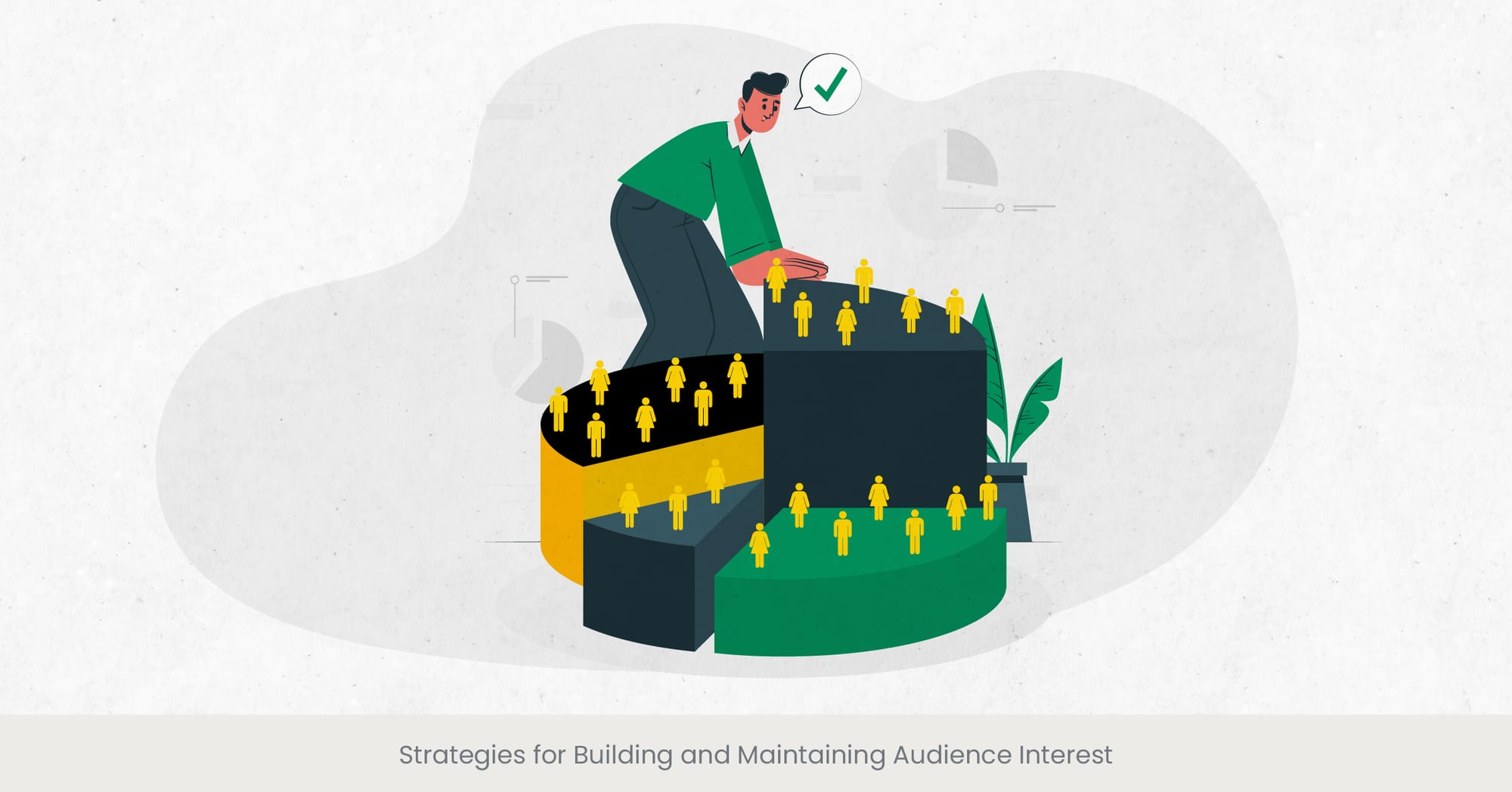
Captivating Your Audience Beyond the Opening sales presentations
After a strong start, the challenge shifts to maintaining that grip on your audience’s attention throughout the presentation. This is where the strategic interplay of content creation, delivery, and presentation design becomes crucial. Engaging your audience requires a dynamic approach that adapts to their responses and keeps them interested in the next business idea or topic for presentation. To achieve this, presenters must master the art of storytelling, integrate interactive elements, and use visual aids effectively. Each of these strategies contributes to building a connection with the audience, ensuring they remain invested in the ideas for business presentation from beginning to end.
The key to maintaining interest lies in understanding who your audience is and what they seek from your presentation. Background information on audience demographics, their industry knowledge level, and what they find valuable can guide the customization of your presentation. Historical analyses of successful sales presentations reveal that the most engaging ones are tailored to the audience's specific interests and needs. This customization can range from the use of industry-specific jargon for expert audiences to simplifying complex concepts with visuals for general audiences. Recognizing these nuances is critical for keeping your audience engaged throughout your presentation.
Illustrative Success Stories and Trends presentation design agency
Take, for example, the trend of incorporating live polls or Q&A sessions using platforms like Slido during presentations. This technique not only revitalizes audience interest but also provides immediate feedback, allowing for real-time engagement. Another effective method is the inclusion of case studies or success stories relevant to the presentation topics. For instance, a business presentation on innovation could feature a case study of a successful start-up, directly illustrating the applied concepts. These strategies, supported by high-quality presentation design from a presentation design company, not only enrich the presentation but also reinforce the audience’s connection to the content.
Research supports the effectiveness of these strategies. A study by a leading best presentation design company or agency indicated that presentations incorporating interactive elements like Q&A sessions have a 40% higher retention rate. Additionally, data from the best presentation powerpoint design agency or company shows that the use of visuals and stories can increase audience engagement by up to 50%. These statistics highlight the importance of a well-thought-out presentation design, emphasizing the role of a best presentation design agency or company in creating content that resonates with and captivates the audience throughout the presentation.
The Art of Effective Transitions Between Presentation Points
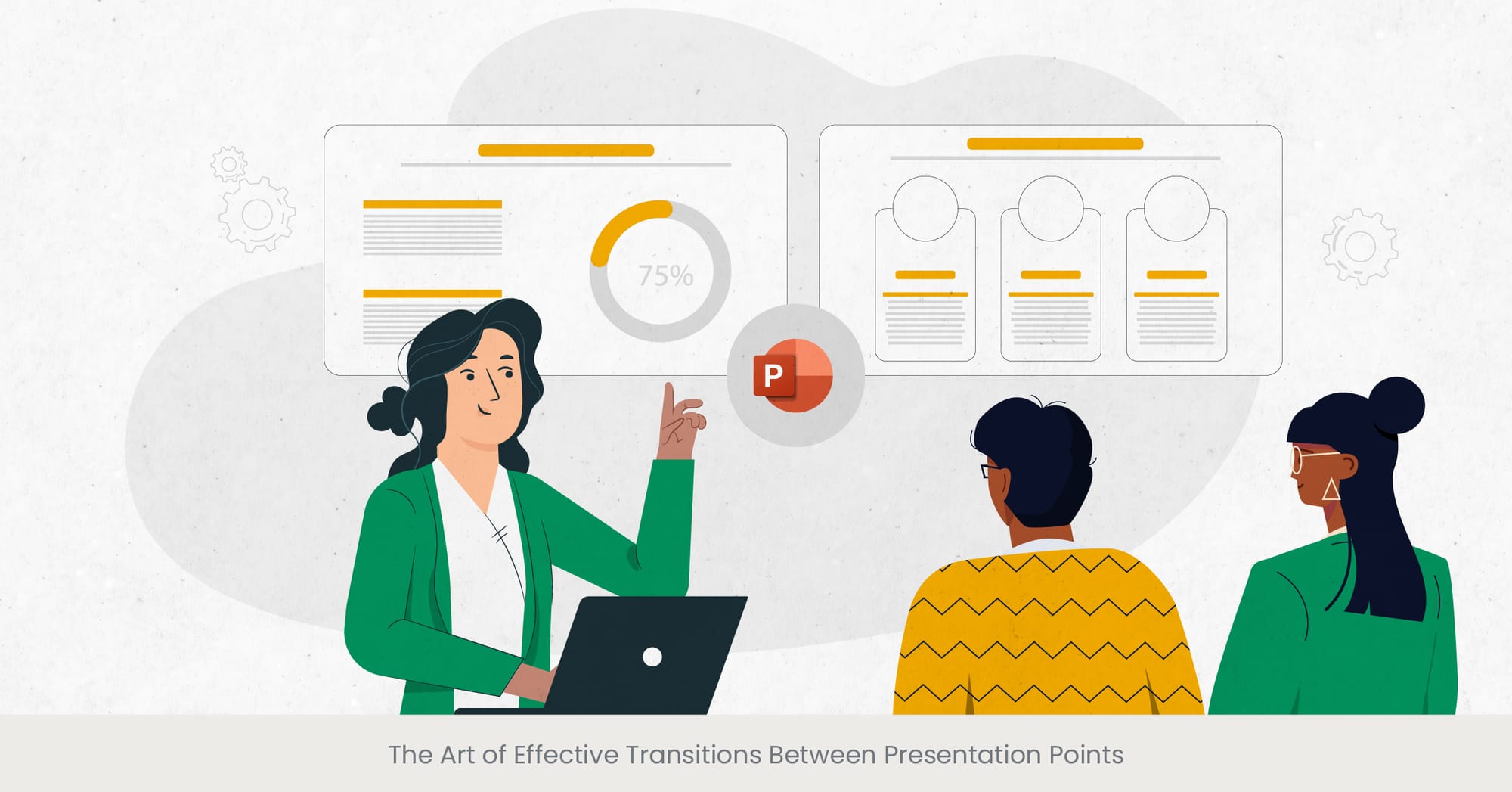
Seamlessly Connecting Your Ideas
Transitioning smoothly between the main points of a presentation is an art that can significantly enhance the flow and comprehension of your message. Effective transitions act as bridges, guiding your audience from one idea to the next, ensuring a cohesive and logical progression of thoughts. This skill is crucial in maintaining audience engagement, as it prevents confusion and keeps the narrative clear. To master this art, presenters must plan their transitions with care, using verbal cues, thematic continuity, and visual aids from presentation design services to create a seamless experience. This approach not only enriches the presentation's structure but also reinforces the audience's understanding of the business topic for the presentation.
The importance of transitions is well-founded in communication theory, which emphasizes clarity, coherence, and audience retention. Historical speeches and business presentations that have stood the test of time often share a common trait: they employ clear transitional phrases and concepts that elegantly link different segments of the presentation. For instance, phrases like "moving on to," "in contrast," or "as a result" signal a shift in focus and prepare the audience for what’s next. Additionally, using consistent themes or motifs throughout the presentation can help reinforce these transitions, making the presentation design integral to the narrative flow.
Practical Examples and Modern Techniques
In the realm of business presentations, the use of visual transitions has become increasingly popular, thanks to advanced presentation design tools. For example, a presentation design company might use animated slides to visually explain or signify a transition, making it both engaging and clear to the audience. Another technique is to pose a rhetorical question or recap the previous point before moving on, which not only reinforces the information but also keeps the audience engaged. Companies like TED have effectively used these methods to create memorable and impactful presentations, demonstrating the power of well-executed transitions.
Studies conducted by presentation design agencies have shown that presentations with clear and creative transitions are more likely to be remembered and understood. A survey by a top presentation design agency revealed that 70% of respondents found presentations with smooth transitions between points to be more compelling and easier to follow. Furthermore, incorporating transitions that involve audience interaction, such as quick polls or reflective questions related to the presentation topics, has been shown to increase engagement levels by up to 30%. This evidence underscores the value of investing time and resources into developing effective presentation transitions, highlighting the role of presentation design agencies in enhancing the overall presentation quality.
Incorporating Memorable Closing Statements

Ensuring a Lasting Impact PowerPoint presentations
The conclusion of a business presentation is not merely an endpoint but a critical moment to reinforce your key message and leave a lasting impression on your audience. A memorable closing statement serves as the capstone of your presentation, encapsulating the essence of your message and motivating your audience towards reflection or action. Crafting such a conclusion requires careful thought and creativity, aiming to resonate emotionally and intellectually with the audience. This is where the cumulative impact of your presentation culminates, making it essential to echo the core themes and drive home the significance of the business topic for the presentation.
Drawing from the principles of rhetoric and communication, an effective closing statement should serve several purposes: it should summarize the main points, highlight the presentation's significance, and, where appropriate, call the audience to action. Research in the field of public speaking and presentation skills underscores the importance of a conclusion that reinforces the audience's memory of the presentation and leaves them with a clear takeaway or next step. This can be achieved through a variety of rhetorical devices, including repetition, callbacks to powerful moments within the presentation, and forward-looking statements that challenge the audience to think or act differently.
Real-World Examples of Powerful Closings
Looking to successful business presentations and TED Talks for inspiration, the most impactful conclusions to corporate presentations often incorporate personal anecdotes, compelling quotations, or a vivid vision of future possibilities. These elements can dramatically enhance the emotional resonance of the closing statement. For instance, a sales presentation might end with a success story that illustrates the transformative potential of the product or service offered. Similarly, a presentation on business growth strategies might conclude with a provocative question that challenges business leaders to rethink their approach, or purchase process, thereby encouraging audience reflection and action steps.
Data from many presentation design agencies and companies indicates that audiences are more likely to remember and act on presentations that include a strong, clear, and motivational closing. A survey conducted by a leading presentation design agency found that presentations ending with a compelling call to action increased audience engagement post-presentation by up to 50%. Additionally, incorporating visual elements from presentation design services in the presentation partner conclusion—such as impactful imagery or concise summary slides—can further enhance retention and motivation, solidifying the closing statement's effectiveness.
Creating a Consistent Presentation Tone
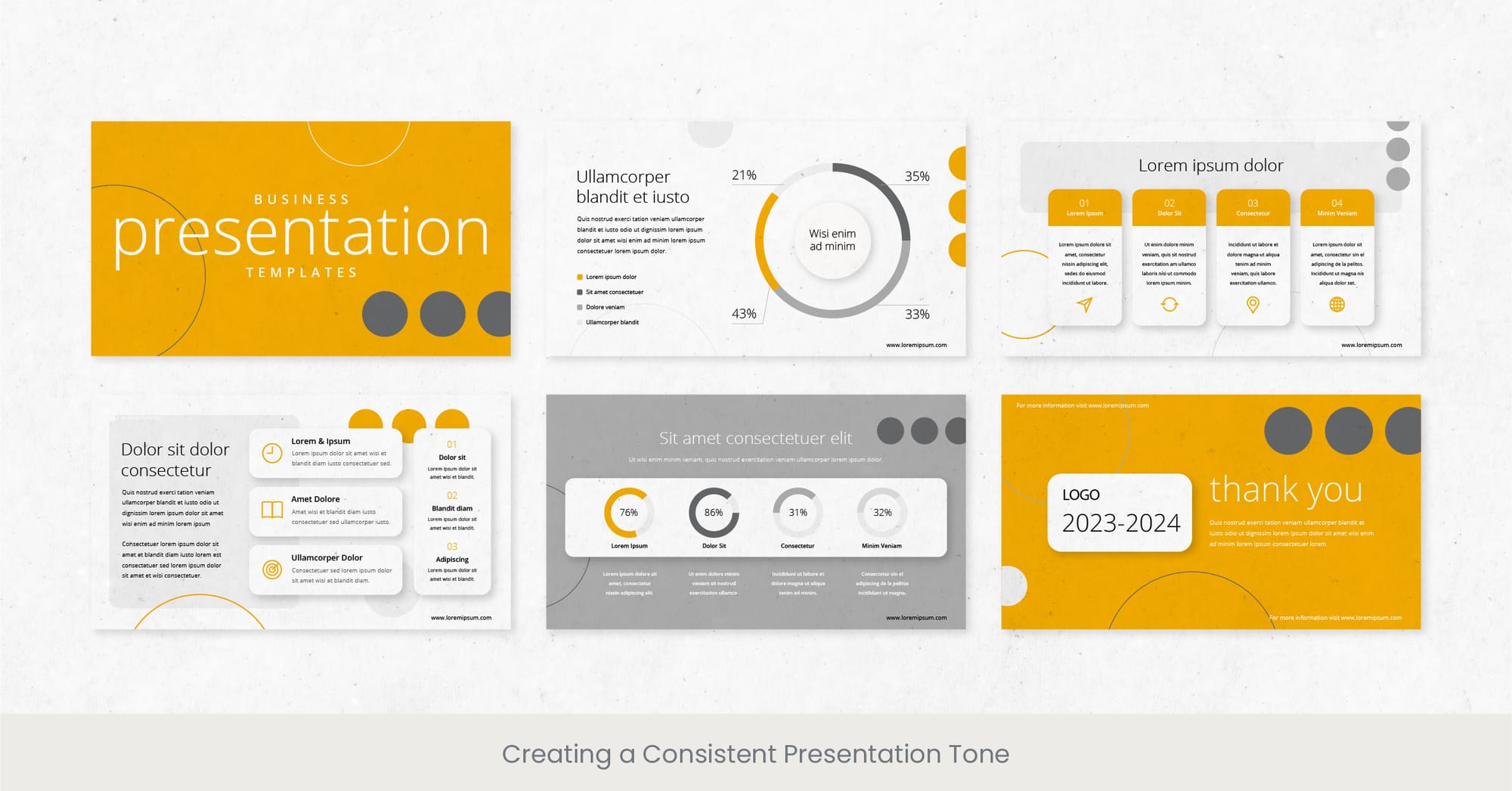
Harmonizing Your Message with Your Delivery
A consistent tone throughout your presentation is pivotal in maintaining audience engagement and ensuring your message is conveyed effectively. This consistency in tone, whether it be professional, inspirational, or conversational, helps to set the audience's expectations and contributes to a cohesive experience. It aligns the verbal and non-verbal elements of your presentation, including language, pacing, and visual style, with the overarching message and goals of your talk. A well-maintained tone that matches the content and context of your presentation can significantly enhance the audience's understanding and retention of the business topic for presentation.
The foundation of achieving a consistent tone lies in understanding the various components that contribute to it. These include the choice of words, sentence structure, the pacing of delivery, and the overall visual design of the presentation. Each element should be carefully considered and aligned with the intended tone and message. For example, a presentation design company can tailor the visual elements, such as color scheme and typography, to complement a formal or informal tone, depending on the presentation's context. Additionally, the presenter's body language and vocal modulation play crucial roles in reinforcing the desired tone, making presentation skills training an invaluable investment for anyone looking to improve their effectiveness as a speaker.
Leveraging Examples for Tone Consistency
Successful presentations often employ a consistent tone to enhance the audience's connection with the material. For instance, TED speakers meticulously match their tone to their topic and audience, whether they're discussing complex scientific concepts or sharing personal stories. This careful matching helps to maintain audience interest and engagement from start to finish. Similarly, companies presenting new products or services at industry conferences use a tone that reflects their personal brand, identity and values, further establishing a connection with their audience. These examples illustrate the impact of a well-executed tone on audience reception and engagement.
The research underscores the significance of tone consistency in presentations. Studies have shown that audiences are more likely to perceive a presentation as credible and persuasive if the speaker maintains a consistent tone that aligns with the presentation's content and purpose. A report by a notable presentation design agency highlights that presentations with a consistent tone are up to 30% more effective in achieving their objectives, whether those be to inform, persuade, or inspire action. This data reinforces the value of investing in good presentation design and speaker training to ensure that every aspect of the presentation contributes to a harmonious and impactful delivery.
Strategies for Repetition Without Boredom
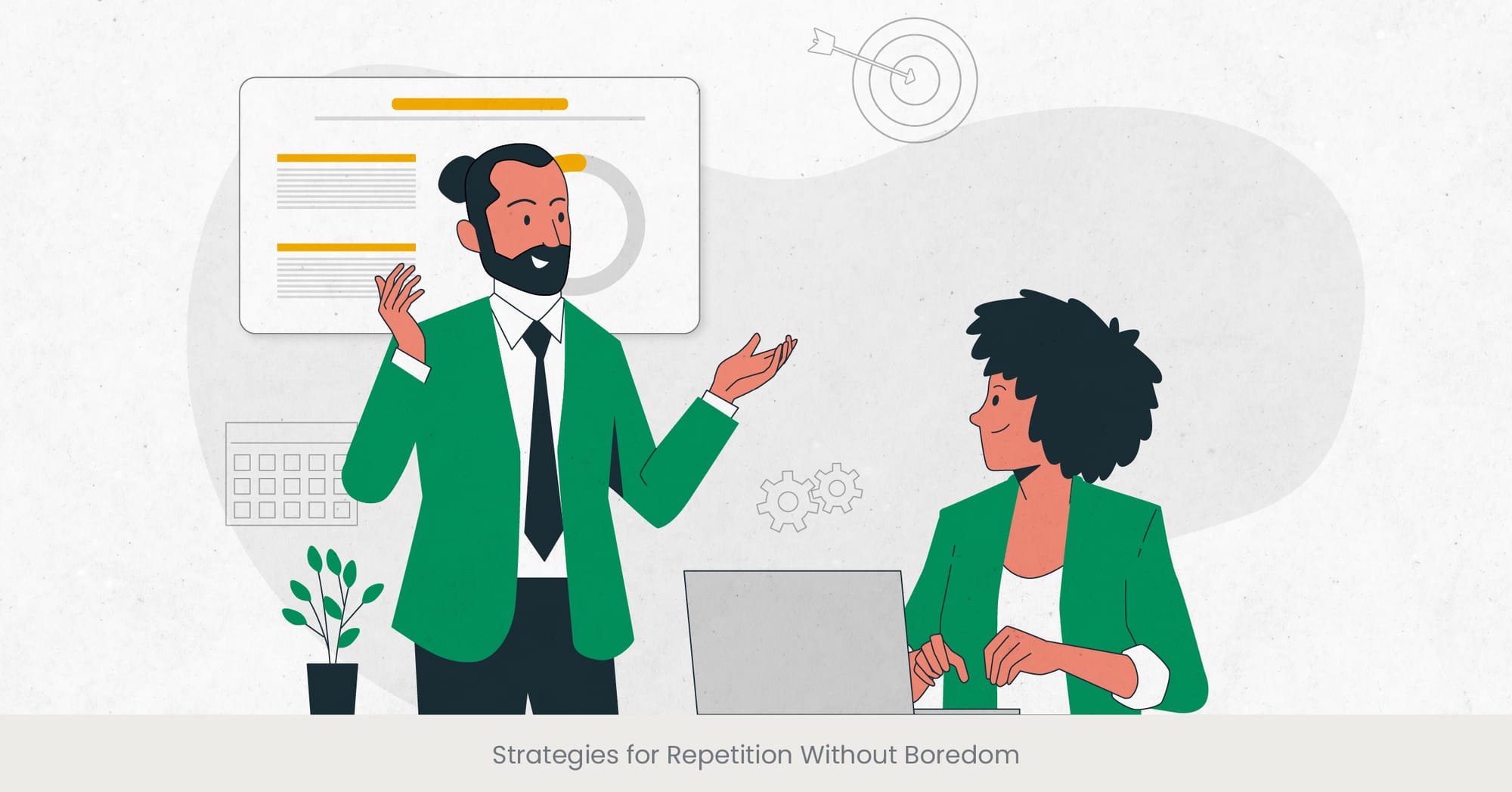
Reinforcing Key Messages Creatively
The strategic use of repetition in a business presentation serves as a powerful tool to reinforce key messages, ensuring they resonate and remain with the audience. However, the challenge lies in employing repetition without inducing boredom or disengagement. To navigate this, presenters must find creative ways to reiterate their main points, varying the delivery to maintain interest. This involves a powerpoint presentation design leveraging different formats, such as stories, analogies, visuals, and interactive elements, to present the same idea in fresh and engaging ways. By doing so, the core messages of the powerpoint presentation design and topics become memorable without becoming monotonous.
Cognitive psychology suggests that repetition is essential for memory retention. Yet, it also warns against the diminishing returns of too much repetition, which can lead to disengagement and annoyance. The key, therefore, is balanced repetition - introducing the main points several times throughout the presentation but in varied and innovative forms. This could mean revisiting a central idea through a different narrative lens, presenting data in new formats, or incorporating audience interaction to refresh the concept. Such strategies not only reinforce the message but also enhance the overall engagement with the presentation.
Illustrating Through Case Studies
Consider the case of a renowned sales presentation by a leading tech company, which introduced its product's unique selling proposition (USP) at the beginning powerpoint presentation, reinforced it with customer success stories in the middle, and summarized its benefits in the closing. Each repetition of the USP was presented differently, keeping the audience engaged while solidifying the product's value in their minds. Similarly, educational presentations often repeat key concepts through direct explanation, followed by examples, and then quizzes or interactive discussions. These approaches demonstrate how repetition, when executed creatively, can be both effective and engaging.
Research by marketing and presentation design companies and agencies has shown that presentations employing creative repetition strategies significantly increase message retention and audience satisfaction. A study by a leading presentation design company revealed that audiences were 30% more likely to recall the main message of a presentation when it was repeated in varied formats compared to when presented singularly. Furthermore, feedback collected indicated a higher level of engagement and positive reception towards presentations that used innovative methods to revisit key points. This evidence underscores the importance of employing repetition creatively to enhance both the memorability and enjoyment of the presentation.
Utilizing Rhetorical Devices for Impactful Delivery
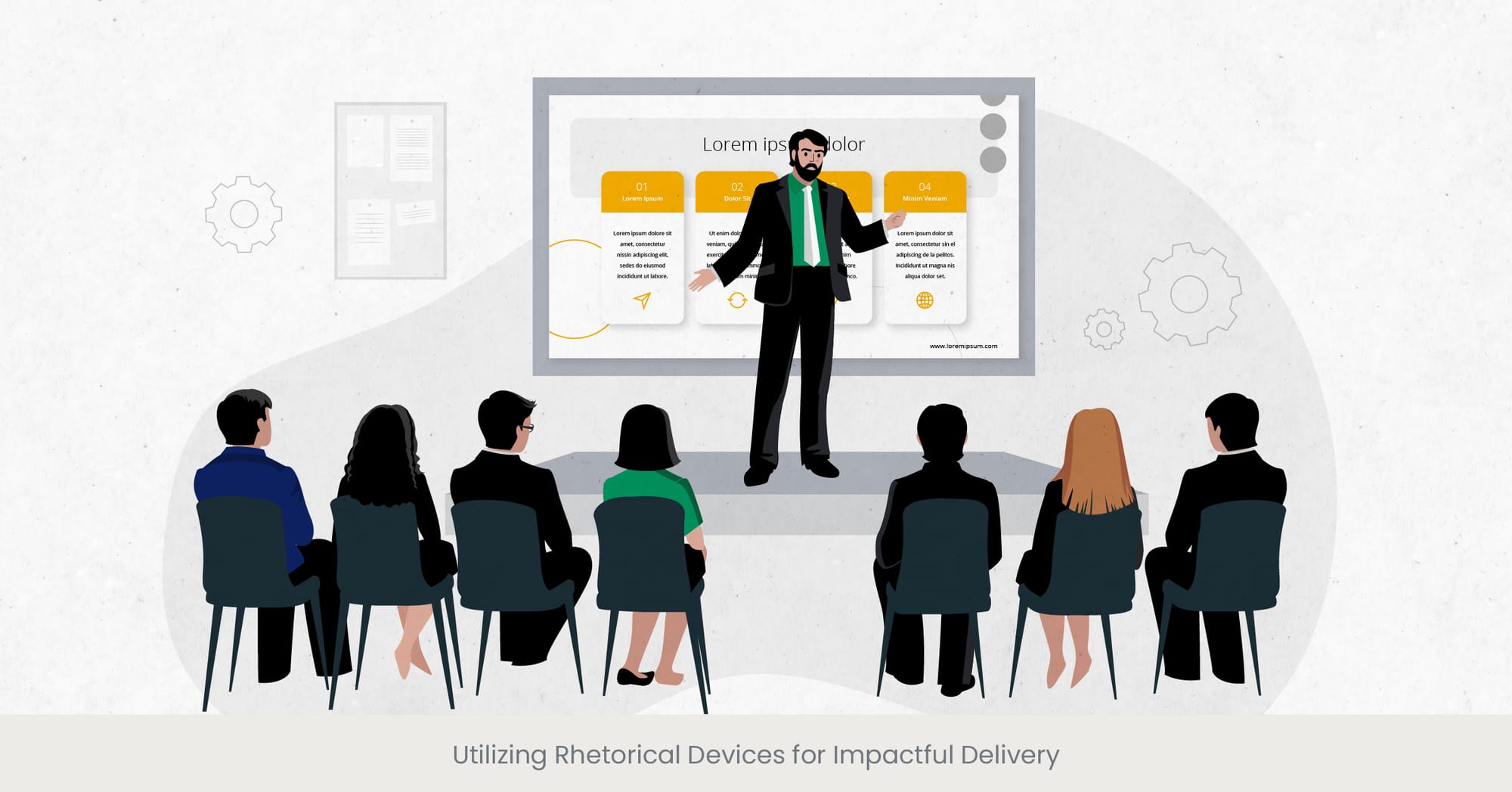
Enhancing Persuasion and Engagement
Rhetorical devices are a speaker's best ally for making their delivery more impactful and persuasive. These linguistic tools can significantly enhance the appeal of a presentation, making complex information more accessible, engaging, and memorable. By skillfully incorporating techniques such as metaphors, analogies, repetition, and rhetorical questions into persuasive presentations, presenters can strengthen their argument and connect more deeply with their audience. This strategic use of language elevates the presentation from a mere conveyance of information to an engaging narrative that captivates the audience's attention and imagination.
The use of rhetorical devices is rooted in ancient rhetoric, emphasizing the art of persuasion through effective speech. Each device serves a specific function: metaphors and analogies simplify complex ideas; rhetorical questions engage the audience's thought processes; and strategic repetition emphasizes key points. Understanding how to employ these devices can transform the delivery of a business presentation, making the content not only more persuasive but also more enjoyable for the audience. This approach is particularly effective in business presentations where the goal is to persuade or motivate, such as in sales presentations or pitches for new projects.
Real-World Applications and Examples
A closer look at memorable speeches and presentations reveals the masterful use of rhetorical devices. For example, Steve Jobs frequently used analogies and metaphors to describe new technologies, making them relatable and exciting. Similarly, TED Talk speakers often pose rhetorical questions to provoke thought and make the audience ponder deeper issues, thereby increasing their engagement with the topic. These examples demonstrate how rhetorical devices can be effectively used to enhance the delivery of a presentation, making the message not only clearer but also more compelling.
Research supports the effectiveness of rhetorical devices in enhancing presentation outcomes. Studies have shown that presentations utilizing rhetorical strategies are more likely to persuade audiences and be remembered long after the presentation concludes. For instance, a survey by a presentation design company found that presentations incorporating rhetorical questions and analogies had a 25% higher audience engagement rate. Additionally, a study in the field of communication found that the use of metaphors significantly increases the persuasiveness of a speaker, highlighting the importance of these techniques in crafting an impactful presentation.
Techniques for Building Emotional Connection with the Audience
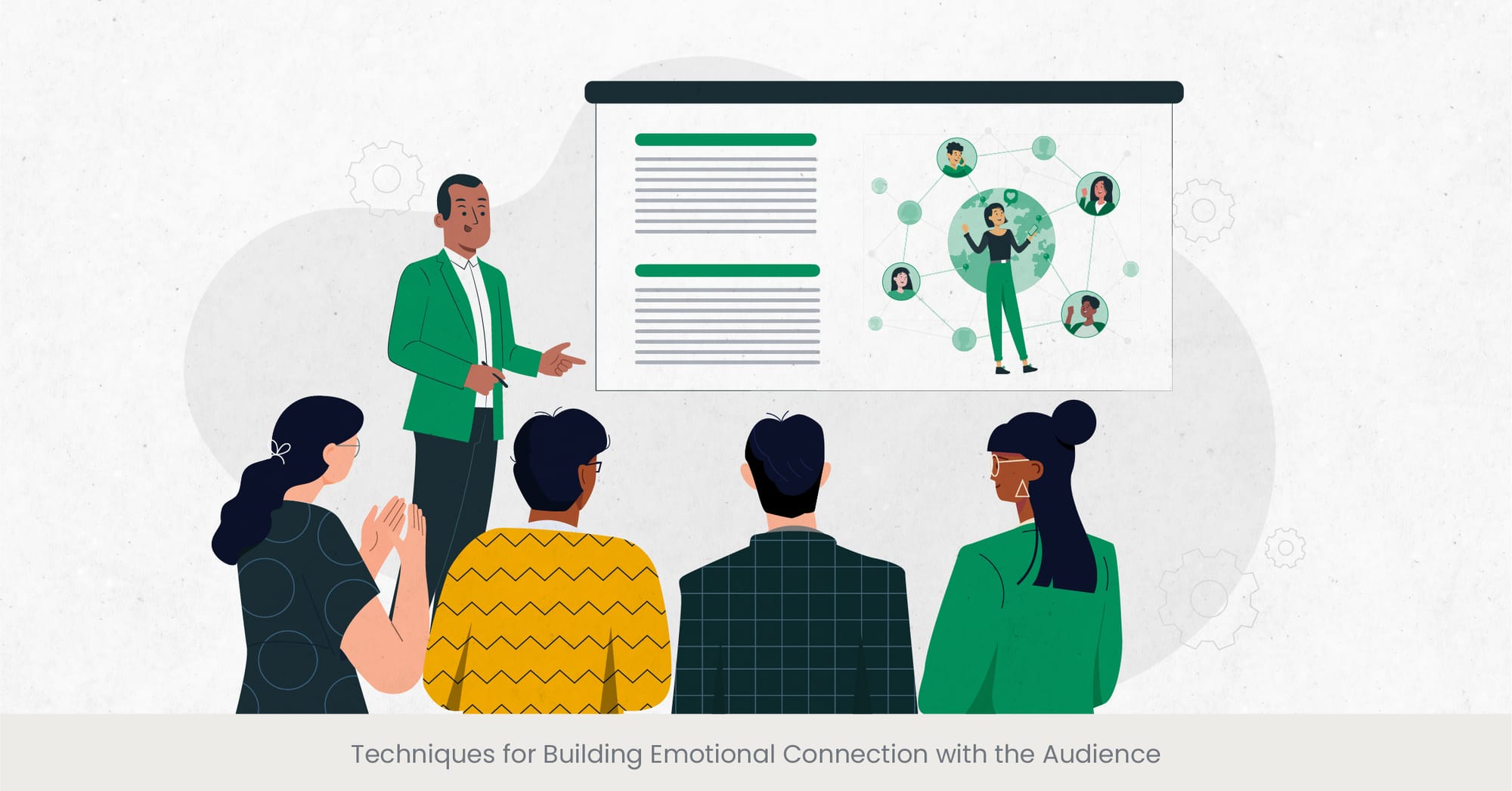
Fostering a Deep, Personal Link
Building an emotional connection with the audience is pivotal for the success of any business presentation. This connection facilitates a more engaging and impactful exchange, making the audience more receptive to the message being conveyed. Techniques to achieve this involve sharing personal anecdotes, displaying genuine enthusiasm, and expressing empathy toward the audience's challenges and concerns. By humanizing the presentation, speakers can transcend the boundaries of formal communication, creating a memorable experience that resonates on a personal level with each audience member.
At the core of building an emotional connection is the ability to communicate effectively empathize with the audience. This involves understanding their perspectives, needs, and emotions, and reflecting this understanding in the presentation. Through empathy, a presenter can tailor their message in a way that acknowledges the audience's experiences, thereby fostering a sense of trust and rapport. For instance, addressing common challenges faced in the industry and offering relatable solutions can demonstrate the presenter's commitment to adding value, and enhancing the emotional bond between the speaker and the audience.
Illustrative Examples of Emotional Engagement
The impact of emotional connection can be observed in some of the most compelling presentations. Presenters like Brené Brown, who share personal stories and vulnerabilities, succeed in creating a powerful emotional bond with their audience. This approach encourages the audience to engage not just intellectually but emotionally, making the presentation's message more impactful and enduring. Similarly, business leaders who share their own experiences of overcoming challenges can inspire and motivate their audience, illustrating the profound effect of personal connection in a professional context.
Empirical evidence highlights the significance of emotional connection in presentations. Studies have shown that audiences are more likely to remember and act upon messages delivered with emotional appeal. A report by a leading presentation design agency found that presentations that included personal stories or emotional elements had a 35% higher retention rate among audiences. Moreover, emotional engagement has been linked to increased persuasion, with audiences more likely to be influenced by speakers to whom they feel a personal connection. These findings underscore the importance of incorporating techniques that build emotional rapport, emphasizing the role of genuine, empathetic communication in achieving presentation success.
The Power of Personal Anecdotes in Business Presentations
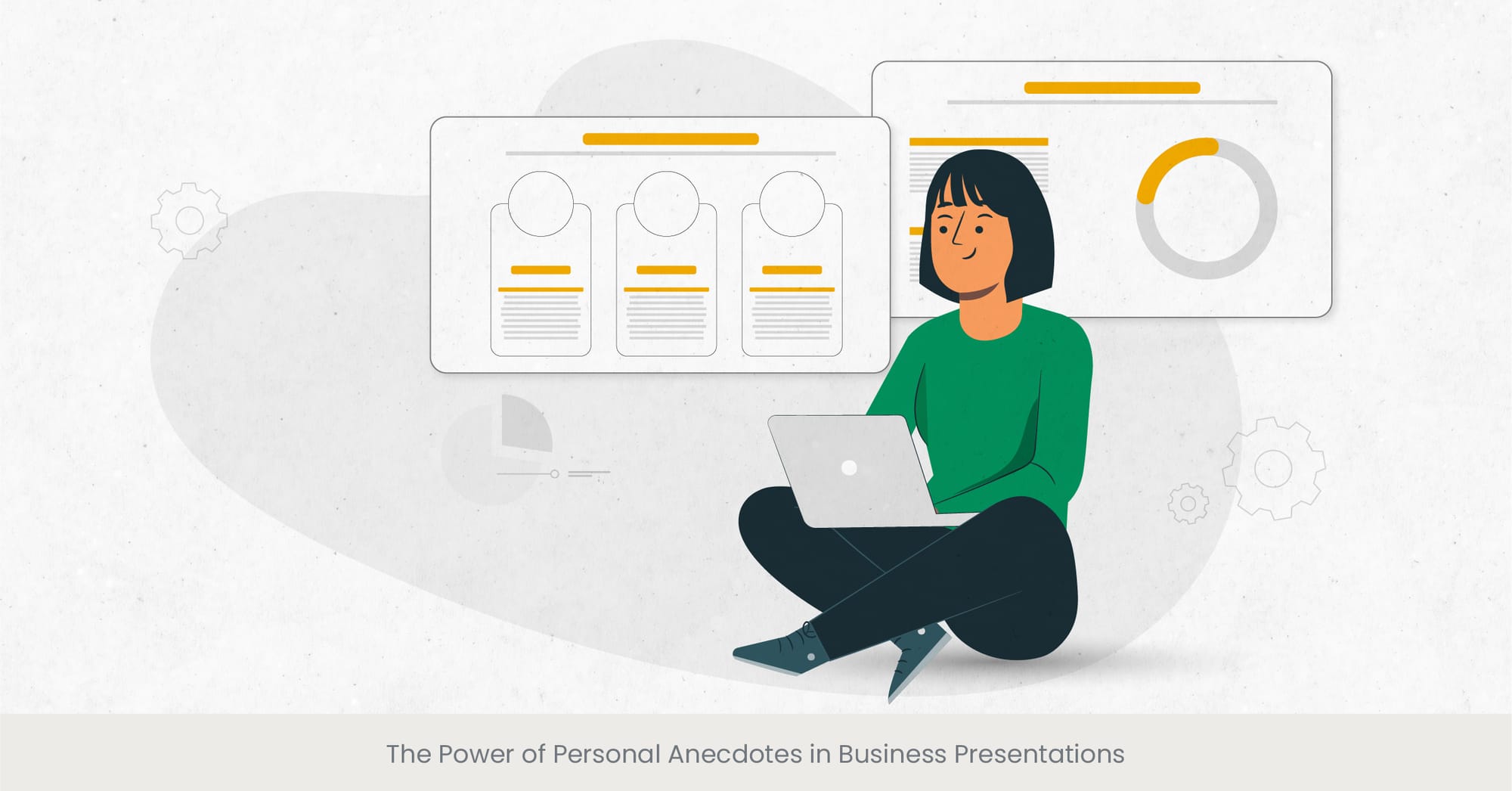
Humanizing Your Message with Personal Stories
The inclusion of personal anecdotes in business presentations serves as a powerful tool to humanize the speaker, making the content more relatable and engaging for the audience. Personal stories can bridge the gap between abstract concepts and real-world applications, providing tangible examples of how business principles play out in personal experiences. This approach not only captivates the audience's attention but also enhances the memorability of the presentation, as personal narratives are often more easily recalled than statistical data or theoretical explanations.
Personal anecdotes work because they tap into the universal human experience, allowing audience members to see themselves in the stories being told. This relatability is crucial in business presentations, where the goal is often to persuade or inspire action. By sharing challenges, failures, successes, and learnings from their own life, a speaker can demonstrate vulnerability and authenticity, fostering a stronger connection with the audience. This technique is especially effective in presentations on topics such as: leadership skills, innovation, and overcoming adversity, where personal journeys can illustrate key points more vividly than abstract discussion.
Examples of Effective Anecdotal Presentations
Notable speakers and business leaders frequently leverage personal anecdotes to great effect. For instance, in presentations about innovation and creativity, speakers might share their own "eureka" moments or the setbacks they encountered on the path to discovery. These stories not only provide insight into the creative process but also humanize the speaker, making them more approachable and their messages more impactful. Similarly, entrepreneurs often recount the origins of their business ventures, highlighting the personal passion and perseverance that fueled their success. Such anecdotes can inspire and motivate audiences, demonstrating the tangible results of applying business principles in real life.
Research underscores the effectiveness of personal anecdotes in communication. Studies in the fields of psychology and marketing have shown that stories and personal narratives significantly enhance message retention and empathy, compared to presentations that rely solely on factual data. A survey by a presentation design company revealed that presentations incorporating personal stories had a 40% higher engagement rate among audiences. Furthermore, anecdotal evidence suggests that audiences are more likely to take action or change their perspective when they feel a personal connection to the speaker, highlighting the transformative power of personal anecdotes in business and marketing presentations too.
Encouraging Audience Reflection and Action Steps
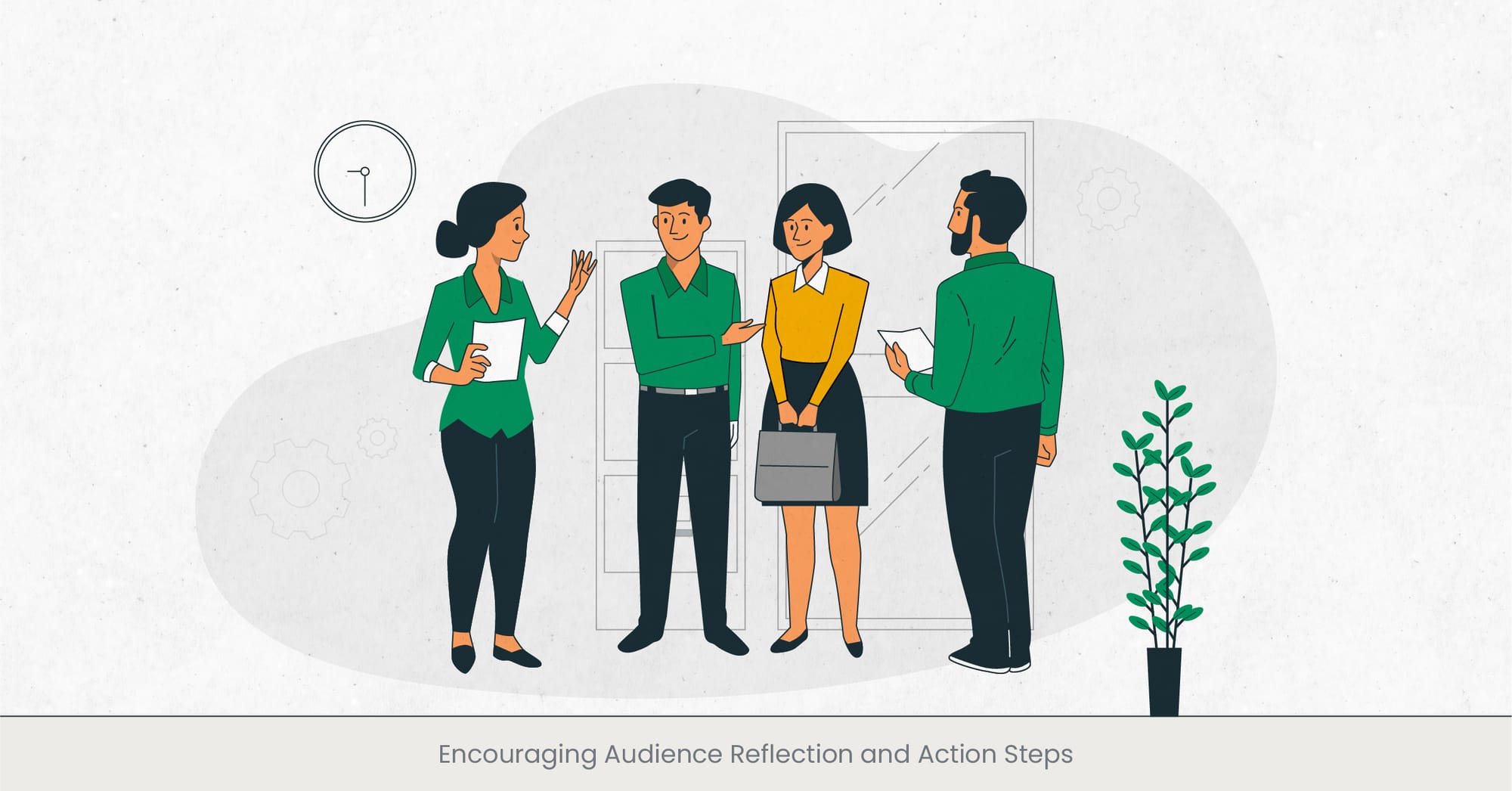
Motivating Change Through Engagement
A pivotal goal of any business presentation is not just to inform or persuade but to motivate the audience toward reflection and action. This involves crafting a message that resonates on a personal level, encouraging individuals to consider how the information presented applies to their own lives or work. By concluding with a clear call to action or reflective questions, presenters can inspire their audience to take the next steps, whether it’s implementing a new strategy, reevaluating a process, or pursuing further learning. This active engagement ensures that the presentation has a lasting impact, extending beyond the confines of the event itself.
To effectively encourage reflection and action, presenters must be strategic in their approach. This includes providing practical, actionable steps that the audience can take post-presentation, making meaningful goal and the path forward clear and attainable. Additionally, leveraging rhetorical questions throughout the presentation can stimulate thinking and self-reflection, preparing the audience for the concluding call to action. It's also beneficial to share resources or tools that can aid in the implementation of these steps, thereby supporting the audience's journey from inspiration to action.
Illustrative Success Stories
The effectiveness of this approach is evident in presentations that have successfully spurred industry changes or motivated personal growth among audience members. For instance, a keynote on sustainable business practices might end successful presentation on climate change with a compelling call to action, urging companies to audit their environmental impact and commit to specific improvements. Such a presentation could share success stories of organizations that have made significant changes, offering a roadmap for others to follow. These real-world examples not only demonstrate the feasibility of the action steps but also provide the inspiration needed to embark on this path.
Research supports the efficacy of presentations that encourage reflection and prompt action. Studies in educational psychology suggest that individuals are more likely to retain information and apply it when they see clear, actionable paths forward. A survey conducted by a leading presentation design agency found that presentations ending with a strong call to action or reflective questions resulted in a 30% higher rate of audience members taking subsequent steps. This data underscores the importance of carefully crafting the conclusion of a presentation to ensure it not only resonates with the audience but also propels them toward meaningful action.
Frequently Asked Questions
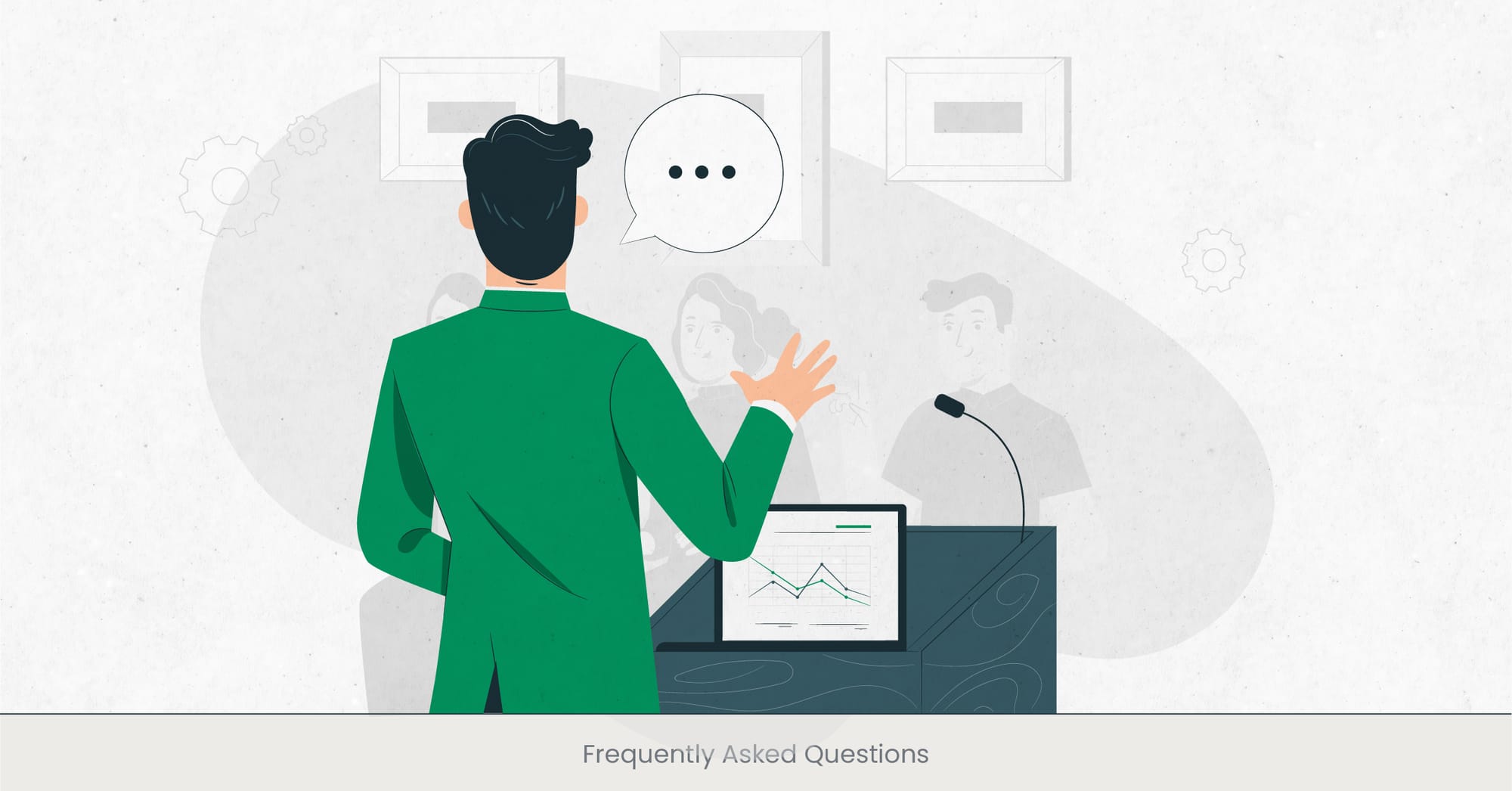
What is the best topic for a business presentation?
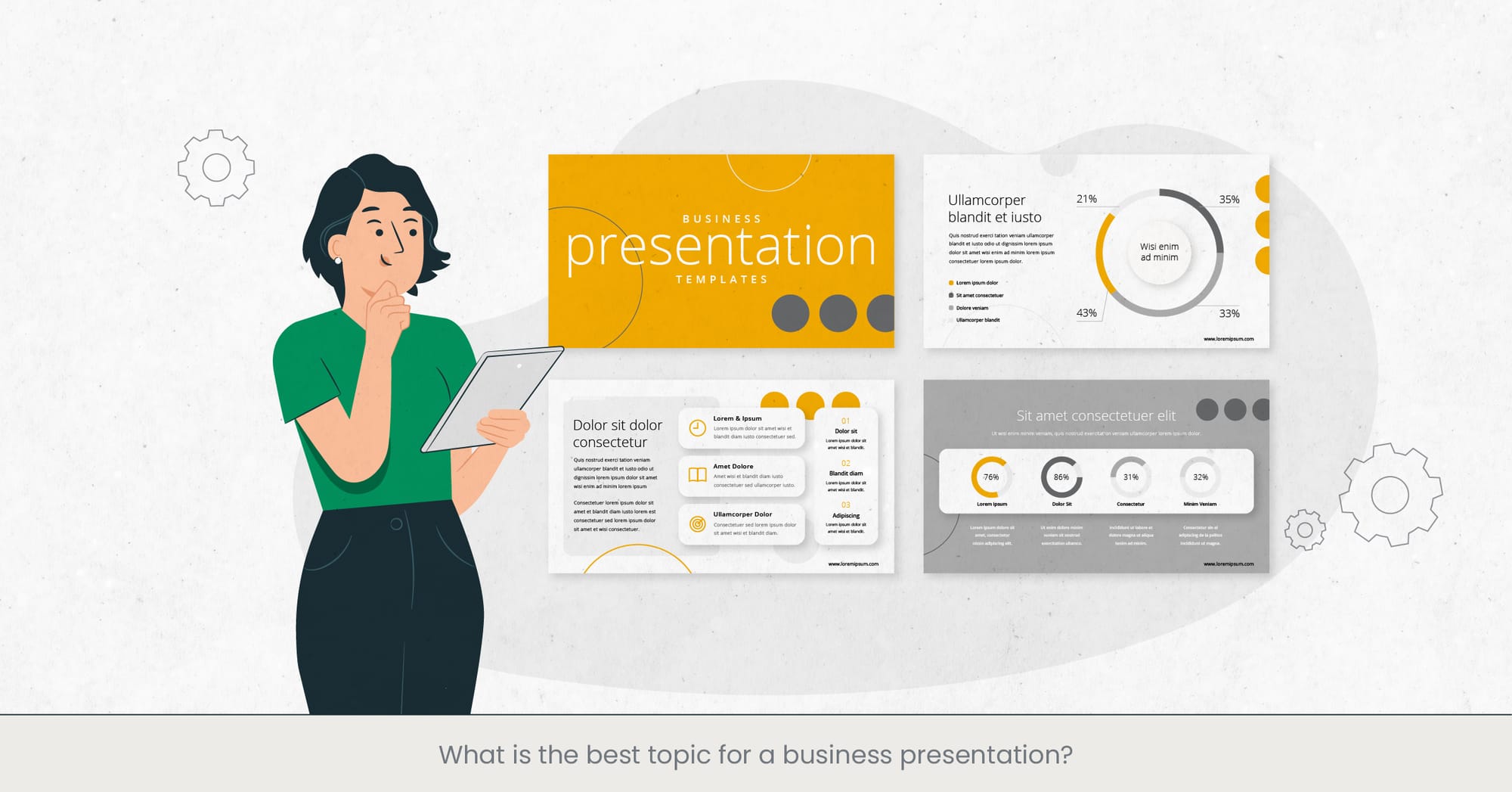
The best topic for a business presentation is one that aligns with the interests and needs of your audience while also reflecting your expertise and passion. It should address current trends, challenges, or opportunities in your industry, offering valuable insights and actionable solutions. Topics that encourage innovation, discuss market dynamics, or share success stories tend to be particularly engaging.
What are the best presentation topics?
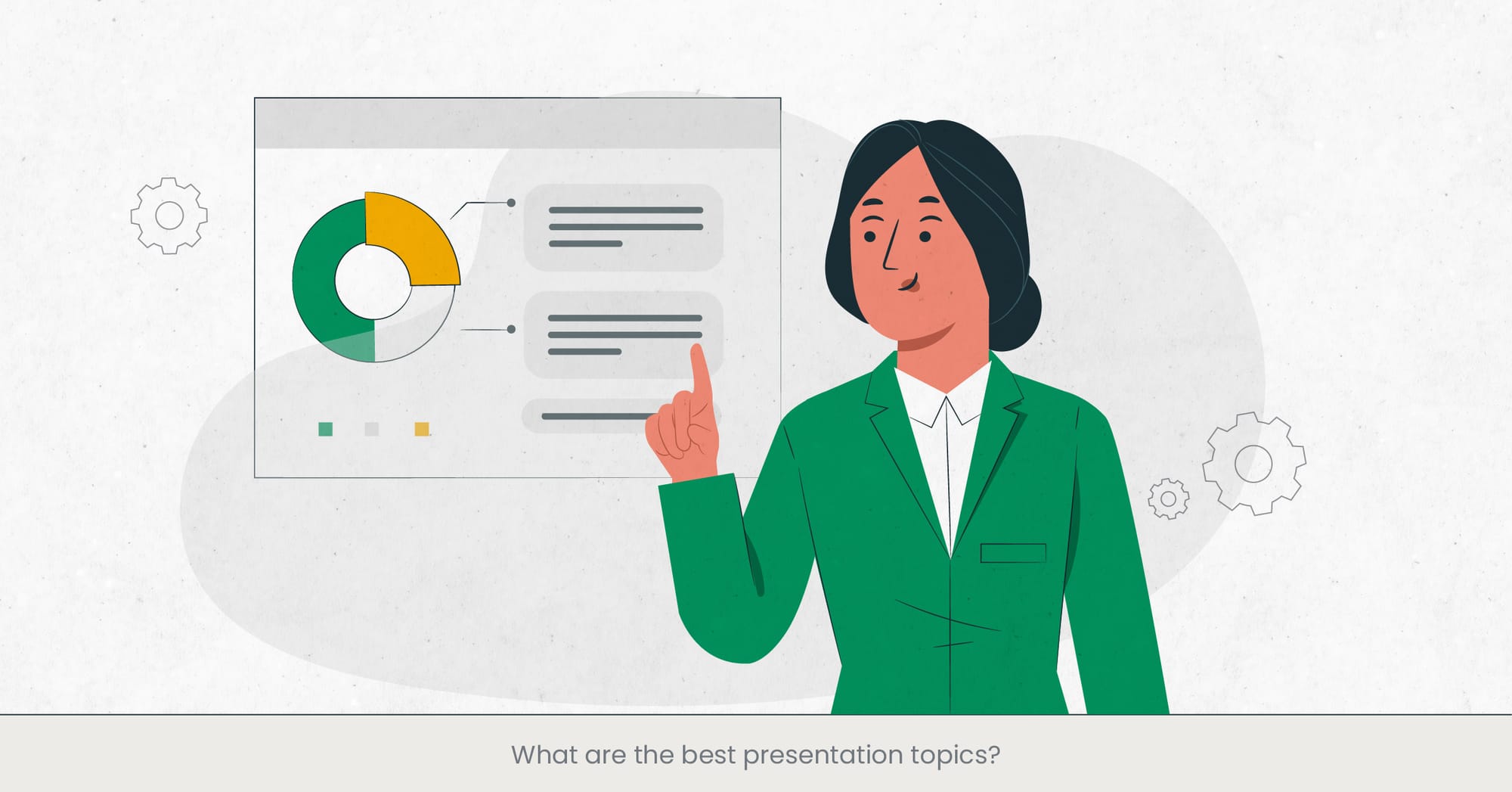
The best presentation topics are those that resonate with your audience, whether it is today's world, sharing cutting-edge industry insights, offering solutions to common challenges, or exploring new growth opportunities while promoting products and business plan. Topics like technological advancements, leadership strategies, customer experience improvements, and sustainability in business practices are universally relevant and engaging.
What should be in a business presentation?
A compelling business presentation should include a clear objective, a well-structured narrative, engaging content, and a strong call to action. It should start with a presentation requires a powerful opening to grab attention, followed by the presentation of key ideas supported by data and examples, effective transitions, and a memorable closing that encourages reflection and action.
How do you make a catchy presentation?
To make a catchy presentation, start with a compelling story or surprising fact, use a visually appealing presentation design, and incorporate interactive elements like polls or questions. Keep your slides concise and visually oriented, and deliver your presentation ideas and content with enthusiasm and confidence to engage your audience fully.
What is a good business presentation?
A good business presentation effectively communicates its message, engaging and persuading the audience. It is well-organized, clear, and concise, with a strong opening and closing, supportive visuals, and a confident delivery. It should also be tailored to the audience's interests and needs, making the content relevant and compelling.
What is a good 5-minute presentation?
A good 5-minute presentation is concise and focused, highlighting the most critical aspects of the topic with clarity and enthusiasm. It should have a clear structure—introduction, body, conclusion—and use engaging visuals and examples to support the main points. The key is to prioritize content that can be realistically covered in a short time while leaving a lasting impression.
What are the best presentation topics?
The best presentation topics stimulate interest and curiosity, covering innovative solutions, industry trends, business topics, personal success stories, unique perspective, or insights into common challenges. Topics that offer value, whether through knowledge, inspiration, or practical advice, will always stand out.
What is a good title for a business presentation?
A good title for a business presentation is both descriptive and engaging, giving the audience a clear idea of the company culture what to expect while piquing their interest. It should be concise, memorable, and relevant to the audience find the content of the presentation, potentially incorporating a key benefit or intriguing question.
What are the best general topics?
The best general topics for presentations are those that have broad appeal, such as personal development, technology impacts modern society, sustainability, social justice, and mental health, and wellness. These topics can be tailored to fit a wide range of audiences and industries, offering valuable insights and discussions.
How much do presentation designers charge?
Presentation designers' charges vary widely based on prior experience, the complexity of the project, and geographical location. Rates can range from $50 to $200 per hour for freelance designers, with project-based fees varying from a few hundred to several thousand dollars, depending on the scope and requirements.
What is a good presentation,design agency?
A presentation design agency specializes in creating visually appealing and engaging presentation materials. They offer services ranging from slide design and storytelling to complete presentation redesign and makeovers, employing a team of designers, writers, and strategists to enhance the effectiveness of essential elements of your presentation.
Which company is best for presentation?
The best company for presentation services depends on your specific needs and budget. Companies like PowerPoint Design 24/7, SlideGenius, and Buffalo 7 are highly regarded for their quality, creativity, and range of specialized design services. It's essential to choose a company that aligns with your presentation goals and aesthetic preferences.
What does a presentation designer do?
A presentation designer focuses on creating visually compelling presentation materials that enhance communication and engagement. They work on slide design, and data visualizations, storytelling, and data visualization, ensuring that the first impression final presentation made is both informative and captivating to the audience.

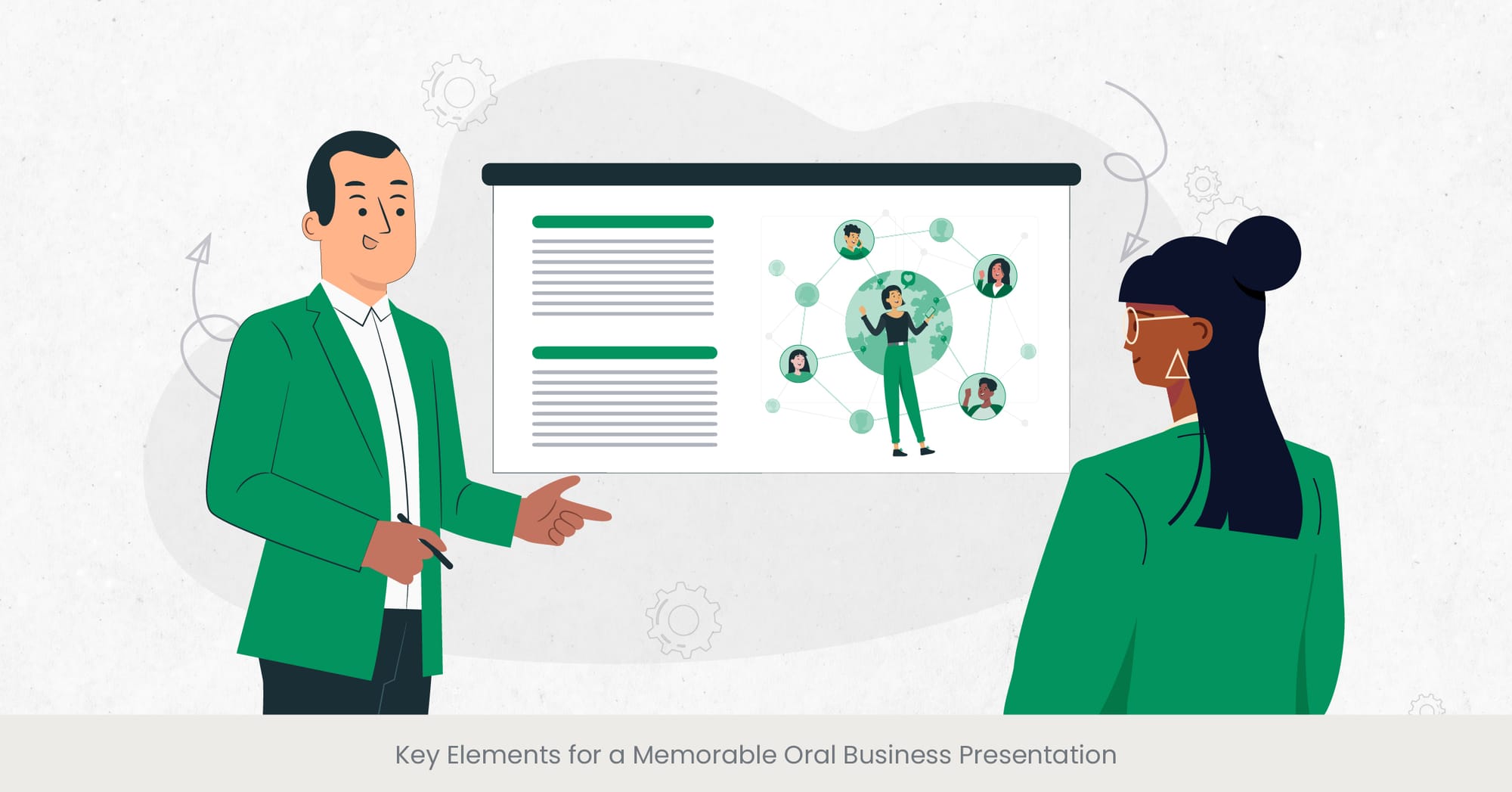

%20(1).jpg)
%20(1).jpg)
